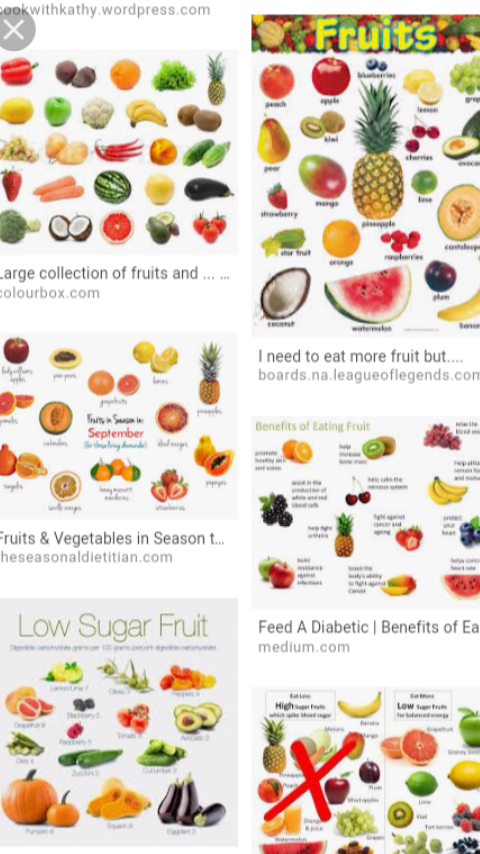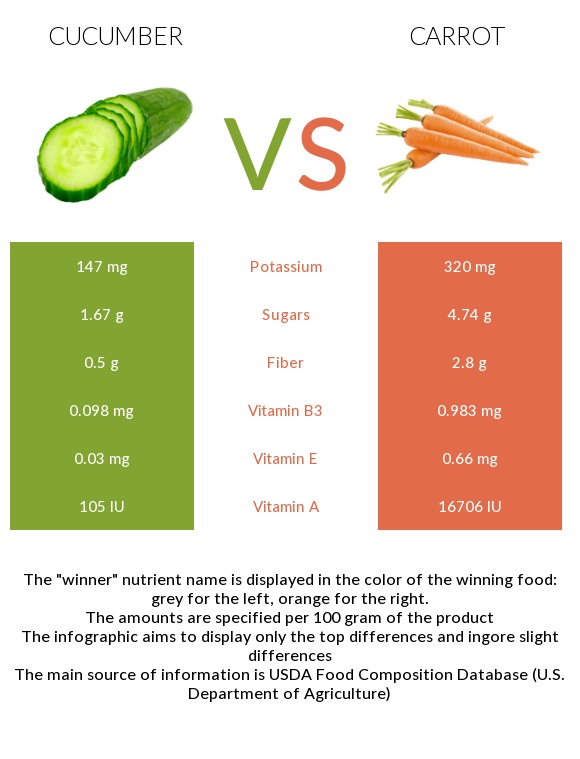|
|
Benefits of fruits and vegetables
Money Land Forum / Foods & Recipes / Benefits of fruits and vegetables (2 Posts | 188 Views)
(1) (Go Down)
|
Benefits of fruits and vegetables by Hadgulz(m) : 10:33 am On Aug 07, 2019 |
|
Healthiest fruits grapefruit Grapefruits contain flavonoids, which can help protect against some cancers, inflammation, and obesity. Grapefruits are sour fruits full of health-inducing vitamins and minerals. Grapefruits can be pink, red, or white. Half a grapefruit contains the following nutrients: 52 calories 13.11 g carbohydrate 2.0 g fiber 27 g calcium 11 g magnesium 166 g potassium 38.4 g vitamin C The flavonoids in grapefruits can help protect against some cancers, inflammation, and obesity. A review study suggests the compounds called furanocoumarins found in grapefruits can help protect against oxidative stress and tumors and may support healthy bones. Some research from this review suggests that grapefruit furanocoumarins may have anticancer properties, which may be especially effective against bre*st cancer, skin cancer, and leukemia. Researchers still need to carry out more studies on animals and humans to confirm these properties. People may wish to see a doctor before adding grapefruit to their diet, as it can interact with certain medications. Read more about grapefruit benefits. How to eat grapefruit Try adding grapefruit slices to a fruit salad, or squeeze the juice into water to make a drink. Otherwise, people can buy pure grapefruit juice from the supermarket. powered by Rubicon Project 6. Blackberries Like other berries, blackberries contain health-boosting anthocyanins. Blackberries contain many seeds, so they have a high fiber content. This means they can help improve gut health and heart health. Half a cup of blackberries contains the following nutrients: 31 calories 6.92 g carbohydrate 3.8 g fiber 21 mg calcium 14 mg magnesium 117 mg potassium 15.1 mg vitamin C Read more about blackberries here. How to eat blackberries People can eat blackberries fresh, add them to yogurt for breakfast or dessert, or add frozen blackberries to smoothies. 7. Apples Apples make a quick and easy addition to the diet. Eat them with the skin on for the greatest health benefits. Apples are high-fiber fruits, meaning that eating them could boost heart health and promote weight loss. The pectin in apples helps to maintain good gut health. One medium apple contains the following nutrients: 95 calories 25.13 g of carbohydrate 4.4 g of fiber 195 mg of potassium 11 mg calcium 8.4 mg vitamin C Research has shown that there is a link between eating apples regularly and a lower risk of cardiovascular disease, certain cancers, and diabetes. Apples also have high levels of quercetin, a flavonoid which may have anti-cancer properties. One study found that people who ate whole apples were 30 percent less likely to be obese than those who did not. This can lower the risk for diabetes and heart disease. Read more about apples. How to eat apples Raw apples make a great snack and combining them with almond butter helps balance protein and fat intake. People can also add raw or stewed apples to yogurt, or use applesauce in cooking. What are the most healthful vegetables? What are the most healthful vegetables? In this article, we look at 15 of the most healthful vegetables people can include in their diet. 8. Pomegranate Many people consider pomegranates to be a 'superfood.' They are high in antioxidants and polyphenols, which help to combat the oxidative stress that can cause disease in the body. Eat pomegranates with the seeds to get the fiber benefits. One raw pomegranate contains: 234 calories 52.73 g of carbohydrate 11.3 g of fiber 666 mg of potassium 28 mg calcium 28.8 mg vitamin C One pomegranate also contains 46.2 micrograms (mcg) of the recommended 80 mcg daily allowance of vitamin K. This vitamin is essential for strong bones and healthy blood cells. A review study about the health benefits of pomegranates suggests that they have anti-inflammatory effects and may help protect against brain-related diseases, such as Alzheimer's disease and Parkinson's disease. This may be because pomegranates contain particularly high levels of polyphenols. Research discussed in this review also suggests that pomegranates may restrict the growth of human prostate cancer cells. Read more about the benefits of pomegranate juice. How to eat pomegranate Pomegranates can make a great addition to salads, or to couscous or rice dishes. Pomegranates are sweet, so people can also add them to yogurt and fruit salads. 9. Pineapple Pineapple is an exotic fruit that may help reduce inflammation and promote healthy tissue growth. Pineapple contains an active compound called bromelain, which many people take as a dietary supplement because of its potential health benefits. The National Center for Complementary and Integrative Health state that bromelain can help with reducing nasal inflammation or sinusitis. However, scientists need to carry out more research into its benefits for osteoarthritis and its anticancer potential. Pineapples contain manganese, which the body uses to build bone and tissue. A medium slice of pineapple also contains the following nutrients: 42 calories 11.02 g carbohydrate 1.2 g fiber 92 mg potassium 40.2 mg vitamin C 11 mg calcium Read more about the benefits of pineapple, the pineapple juice, and potential bromelain benefits. How to eat pineapple People can enjoy fresh pineapple by itself or in fruit salads. They can also use pineapple to make a tropical salsa or add it as a topping on fish tacos. Try adding frozen pineapple to smoothies. 10. Bananas Healthiest fruits banana Bananas are rich in potassium, which helps the body control heart rate and blood pressure. Bananas are well known for their high potassium content. A medium banana contains 422 mg of the adequate adult intake of 4,500 mg of potassium. Potassium helps the body control heart rate and blood pressure. Bananas are also a good source of energy, with one banana containing 105 calories and 26.95 g of carbohydrate. The 3.1 g of fiber in a regular banana can also help with regular bowel movements and stomach issues, such as ulcers and colitis. A medium banana also contains the following nutrients: 1.29 g protein 6 mg calcium 32 mg magnesium 10.3 mg vitamin C Read more about bananas. How to eat bananas A banana is an excellent fruit to use to thicken a smoothie. People can also use them in baking as a natural sweetener or to make banana bread or pancakes. 11. Avocado Many people refer to avocados as a superfood because of their healthful qualities. Avocados are rich in oleic acid, a monounsaturated fat which helps lower cholesterol levels. The American Heart Association say that maintaining healthy cholesterol levels with healthful fats could reduce the risk of heart disease and stroke. Like bananas, avocados are rich in potassium. They also contain lutein, an antioxidant which is important for healthy eyes and skin. Half an avocado contains the following nutrients: 161 calories 2.01 g protein 8.57 g carbohydrate 6.7 g fiber 12 mg calcium 29 mg magnesium 487 mg potassium 10.1 mg vitamin C Avocados also contain folate, vitamin A, and beta-carotene. Read more about avocados. How to eat avocado People can add avocado to salads, or mix with lime, garlic, and tomatoes to make guacamole. Add avocado to smoothies or hummus, or use avocado instead of other fats in baking. 12. Blueberries Blueberries are another superfood that can provide many health benefits. Like strawberries, blueberries contain anthocyanin, which is a powerful antioxidant. Because of this, they might protect against heart disease, stroke, cancers, and other diseases. Blueberries also contain pterostilbene, a compound that may help prevent plaque from collecting in the arteries. Half a cup of blueberries provides the following nutrients: 42 calories 10.72 g carbohydrate 1.8 g fiber 4 mg calcium 57 mg potassium 7.2 mg vitamin C Read more about blueberries. How to eat blueberries Fresh or frozen blueberries are a great addition to breakfast cereals, desserts, yogurt, or smoothies. Summary Fruits come in all shapes and sizes, and different fruits have different health benefits. For the best results, add a variety of fruits to the diet. By eating fruit, a person is providing their body with key vitamins, antioxidants, and dietary fiber. This can have significant benefits for heart health, digestion, weight management, and skin health. People can enjoy a wide variety of fruits to improve their health and lower the risk of inflammation, heart disease, cancer, obesity, and diabetes.[img][/img]
|
|
Re: Benefits of fruits and vegetables by Abdulbasi081478(m) : 12:44 am On Aug 08, 2019 |
|
Thanks
|
(1) (Reply)
How To Make Sausage Muffins [Recipe] / Africa Dominates World’s Healthiest Diets. Here Is The New Top 10 List!! / Easiest way to produce Custard Powder /
(Go Up)
| Money Land Forum - Copyright © 2016 - 2024 | Aderonke Bamidele (Admin). All rights reserved. Follow Money Land Forum on Facebook and Twitter Disclaimer: Every Money Land Forum member is solely responsible for anything that he/she posts or uploads on Money Land Forum. |




